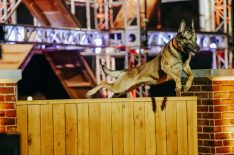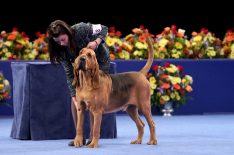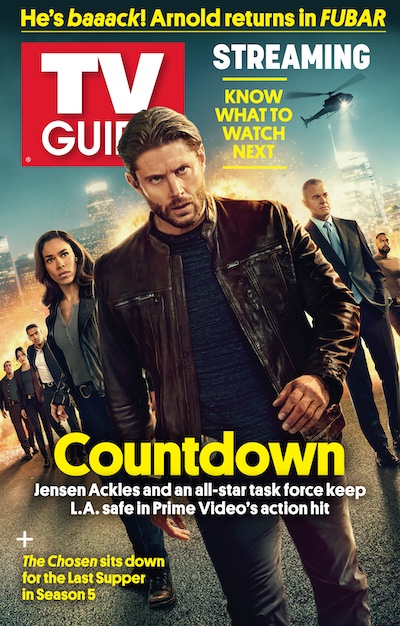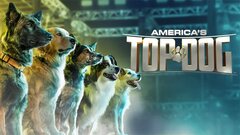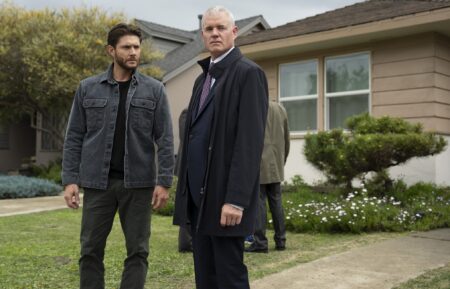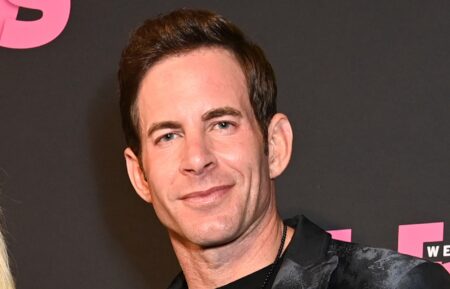‘America’s Top Dog’ Host Curt Menefee on the K9 & Civilian Dogs’ Advantages
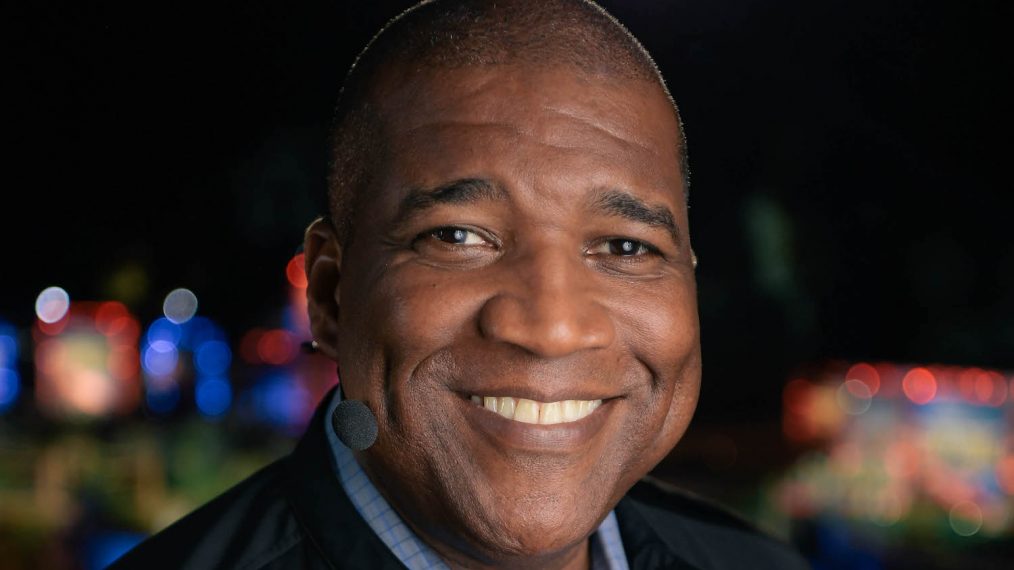
Q&A
If you’re a dog lover and a fan of competition shows like American Ninja Warrior, then A&E’s newest series America’s Top Dog is right up your alley.
The network and Big Fish Entertainment enlisted Fox NFL Sunday and The OT‘s Curt Menefee to host the series, which puts top K9 cops and civilian dogs in competition on the ultimate K9 obstacle course.
“I’m a dog lover. I have two rescue dogs at home, do a lot of dog charitable events, and a lot of that goes on social media for me and I’m guessing they saw that,” Menefee told TV Insider. “As soon as I saw it, I knew it was something I would love. They really showcase these dogs in a different way.”
Here, Menefee previews America’s Top Dog.

(Nico Therin/A&E)
Was there anything from your experience with Fox NFL Sunday and The OT that carried over that you hadn’t expected?
Curt Menefee: I do live TV for 12 hours every Sunday during football season, and I think that experience always carries over, just the opportunity to react to what’s going on in a live format. On America’s Top Dog, you’ve got dogs and they are not necessarily going to react the way you expect them to. Sometimes they go off course. Sometimes it takes them longer to jump over a wall or a fence, and so you gotta have the ability to be able to coax a viewer into, “Let’s root for this dog.” Most people do. These are just cute, furry little love muffins, and no matter what, you’re going to pull for every single dog that goes on.
Which rounds and obstacles did you see K9 and civilian dogs excelling at over the other?
The first round is pretty even between [them].
When you get to the second round, the Boneyard, in general, the police dogs have a little bit of an edge because they’re used to scent detection and trying to find items or people that are missing. We did have civilian dogs that passed through it — civilian dogs have been taught to do obstacle courses or to swim — but to find a specific item attached to a specific scent within a certain amount of time is not necessarily in their wheelhouse. Police dogs maybe had an advantage there, but it didn’t always work out that way and that’s one of the beauties of the show. You learn you can train any dog to do anything and so some of the civilians came out ahead there.
And maybe in the third round civilian dogs have just as much a chance if not more.
Also, when you look at the civilian underdogs that we had, you know if your dog is good in the water or not when you apply for the show. Some of the [police] dogs may train around water, and some may be in a desert area where they never see water. Then the handler has to coax them in, and obviously that eats up time.
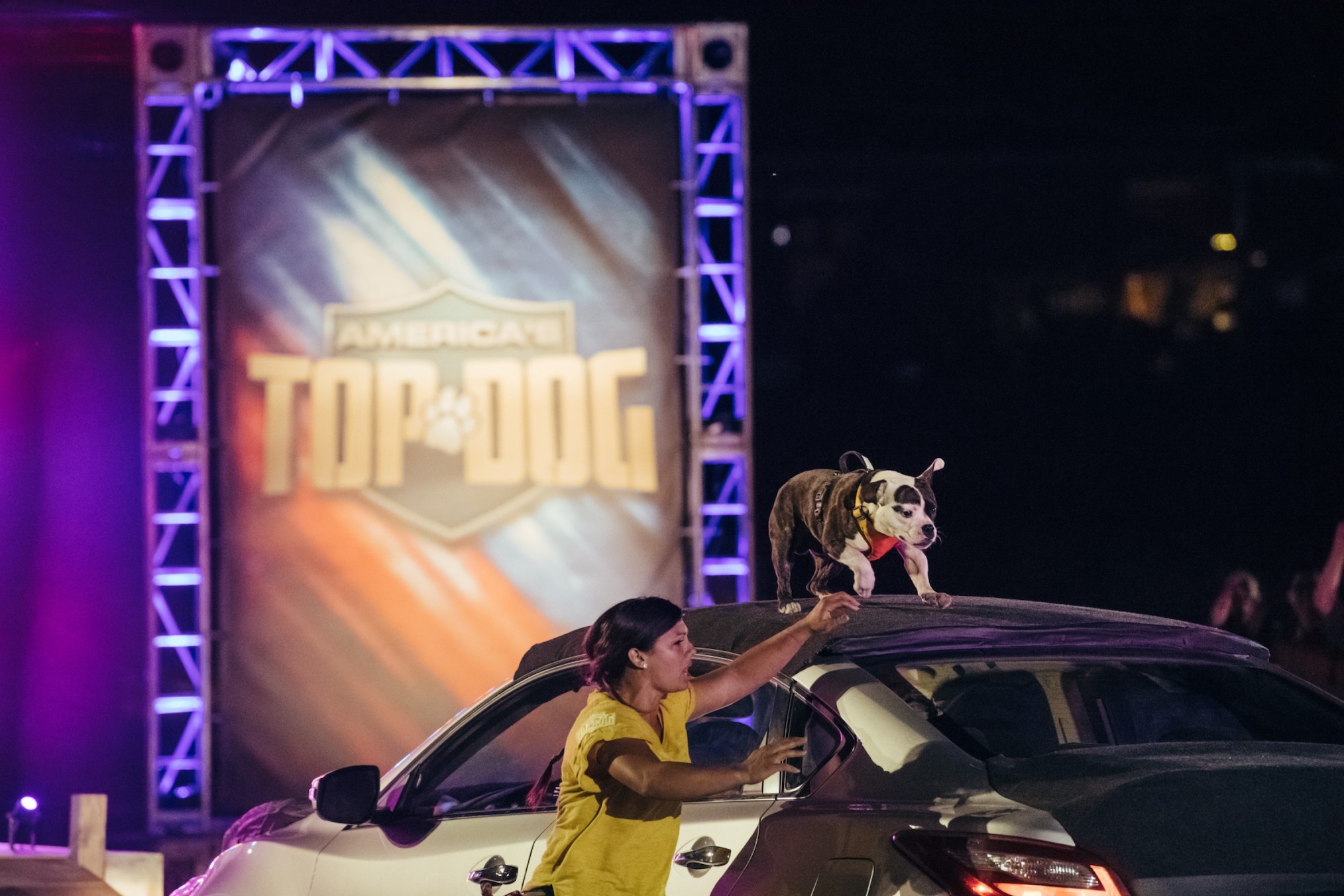
(Nico Therin/A&E)
What did you notice as the host about what’s most important about the bond between the dog and handler? Is there anything you noticed as a dog owner?
Anyone who owns a dog or has owned a dog will be able to identify right away the bond between the animal and the human because you can see the way these dogs look at their handlers and the way they respond to the requests their handlers make. Now, again, just like your dog at home, it may do it 99 times and the 100th time, it may delay for a bit. When you take a look at it on television, you can clearly see that there is a connection between the two. The dog pays attention to the handler, and it’s almost like eye-to-eye and a nonverbal command as much as anything else. That was really good to see.
One of the reasons I was interested in jumping on board this is because with the civilian underdogs, we get to see you can train most dogs to do anything with proper training. The flipside of it was from the police dogs’ standpoint. When we as society see police dogs, 99% of the time they’re chasing down a suspect or they’re on the hunt for a missing person. They’re agitated. They’re mean. It’s a criminal situation. It’s high stress.
To see these same dogs you see on Live PD jumping over fences and trying to catch a suspect at the same time want to play with a ball or we see the pictures of the home life … We explain a little bit of the background on the dog and that these are really just family pets and when it’s time to work, they’re like us. “Whatever my job is, it’s time to do this.” But during the rest of the day, they’re just like your dog at home — they’re just pets and they’re having fun. That’s one aspect I don’t think the people think about when they think about police dogs. I was really, really, really pleased to see that come through with the show.
What did you learn working alongside trainer Nick White that surprised you the most?
[Laughs] That I thought my dogs were well-trained and after listening to Nick explain what your dog should be able to do, I’m like, “Maybe my dogs aren’t that trained overall.” The other thing is Nick’s knowledge of not just dog behavior, but the behavior that specific breeds of dogs are better at than others. Some dogs excel at smell. Some dogs excel at jumping. But being able to explain why in a quick and concise manner was really educational for me.
View this post on Instagram
Abby and Toby wish you a super start to your Saturday! #OjaiHike #adoptdontshop
How far do you think your dogs would go on this show?
The lab shepherd would have no problem with everything, except ironically I have the one lab that’s afraid of water. She loves the ocean, but she hates swimming pools, so she would have trouble getting in the water. My little guy, a French corgi mix, who’s 30 pounds, is tenacious, he would do anything, so the only thing he’d have trouble with is something that forces him to jump over those walls. We pull the ramps up, he’d do that, and he’d be a fighter to the end. They’d do well in Round 1 at least.
America’s Top Dog, Series Premiere, Wednesday, 9/8c, A&E
From TV Guide Magazine
How 'Countdown' Recruited Jensen Ackles to Go Full 'Die Hard'
Countdown boss Derek Haas talks creating the character around Ackles, and the cast teases the “Avengers”-like team of the crime thriller. Read the story now on TV Insider.


